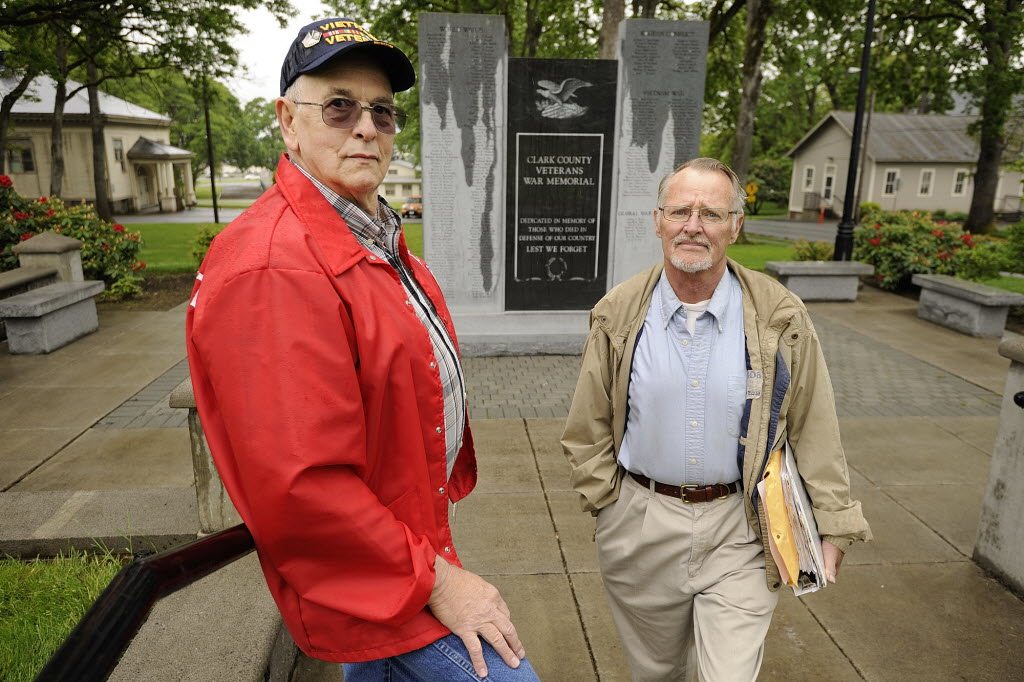This is a weekend to salute our servicemen who died in the line of duty, and to honor the families of the fallen.
It’s what Richard Landis did every day for almost four years. The Clark County veteran was chief of the U.S. Army’s casualty operations center from 1984 to 1987, and was called back to duty for the first Gulf War.
“I buried 3,000 soldiers,” Landis said.
“All Army casualties are reported to the office,” Landis said. “We initiate the notification process. The office assigns casualty assistance officers, helps with the funeral. It coordinates the assistance and benefits the next of kin is entitled to.”
The process did take a quite different turn after one unprecedented disaster, however. That’s when distraught families swept into his headquarters, wondering if their loved ones were dead.
Now the retired lieutenant colonel is a member of the Community Military Appreciation Committee, a local nonprofit organization that will continue to celebrate our military tradition as Army units leave Vancouver Barracks.
Landis said he also serves in another volunteer role, as “name-keeper” for the Clark County Veterans War Memorial. The monument at Vancouver Barracks lists the names of local service personnel who died in conflicts ranging from the Spanish-American War to operations in Iraq and Afghanistan.
However, Landis noted, the office he once ran doesn’t just handle combat fatalities. During most of his tenure, the U.S. wasn’t involved in a shooting war.
Regardless of the cause of death, “it’s all the same process,” he said.
“We would lose 1,000 soldiers a year,” he said. “The Army was much bigger in the 1980s, and soldiers would die in auto accidents or training accidents, or die of diseases.”
248 killed in plane crash
Landis was on duty when the U.S. military suffered its biggest peace-time loss in history. A chartered airliner bringing soldiers home from peace-keeping duty in the Middle East crashed on Dec. 12, 1985, after a refueling stop in Newfoundland, Canada. The crash killed 248 members of the 101st Airborne Division.
“The news media picked it up within hours,” Landis said, undercutting the Army’s carefully crafted notification procedures.
Government buildings were more accessible in those days, and soldiers’ families walked right into operations center headquarters in Alexandria, Va.
The only thing the Army personnel in Landis’ office could say was: “There were no survivors, and we believe your son was on board.”
“I did that three times that day,” Landis said.
In his years with the casualty operations center, Landis saw the toll a military death can take on a soldier’s family.
“Families can get depressed, or angry at the military,” Landis said.
Chuck Jones, a Vietnam veteran who was with Landis at the county war memorial a few days ago, says he’s experienced some of that.
“I went to the funeral of a friend” who died in the war, Jones said. “His mom chased me out. He was dead; I was alive.”
A divorce in the family can complicate the tragedy. Sometimes it’s a question of which divorced parent gets custody of the soldier’s remains.
“If a soldier is killed while in the process of getting a divorce, the benefits go to the spouse, regardless of the marital situation,” Landis said.
Emotions can go both ways.
“People have thanked us,” Landis said.
Prepare for war
Landis retired from the Army in 1989, but was called back in December 1990.
“It was ahead of Desert Storm,” Landis said. “We were getting 300 Army Reservists trained before it started.”
Fortunately, Landis said, “it was a three- or four-day conflict, and we lost a small percentage of the casualties we were told we would sustain.”
The office is not just called into action after a soldier dies, Landis added. Sometimes it’s a matter of life, not death.
“When a soldier is critically injured, the doctor can ask the family to come if it might aid the soldier’s survival,” Landis said. “If the soldier is hospitalized overseas, the office will even help the family members get passports.”
Tom Vogt: 360-735-4558 or tom.vogt@columbian.com.




